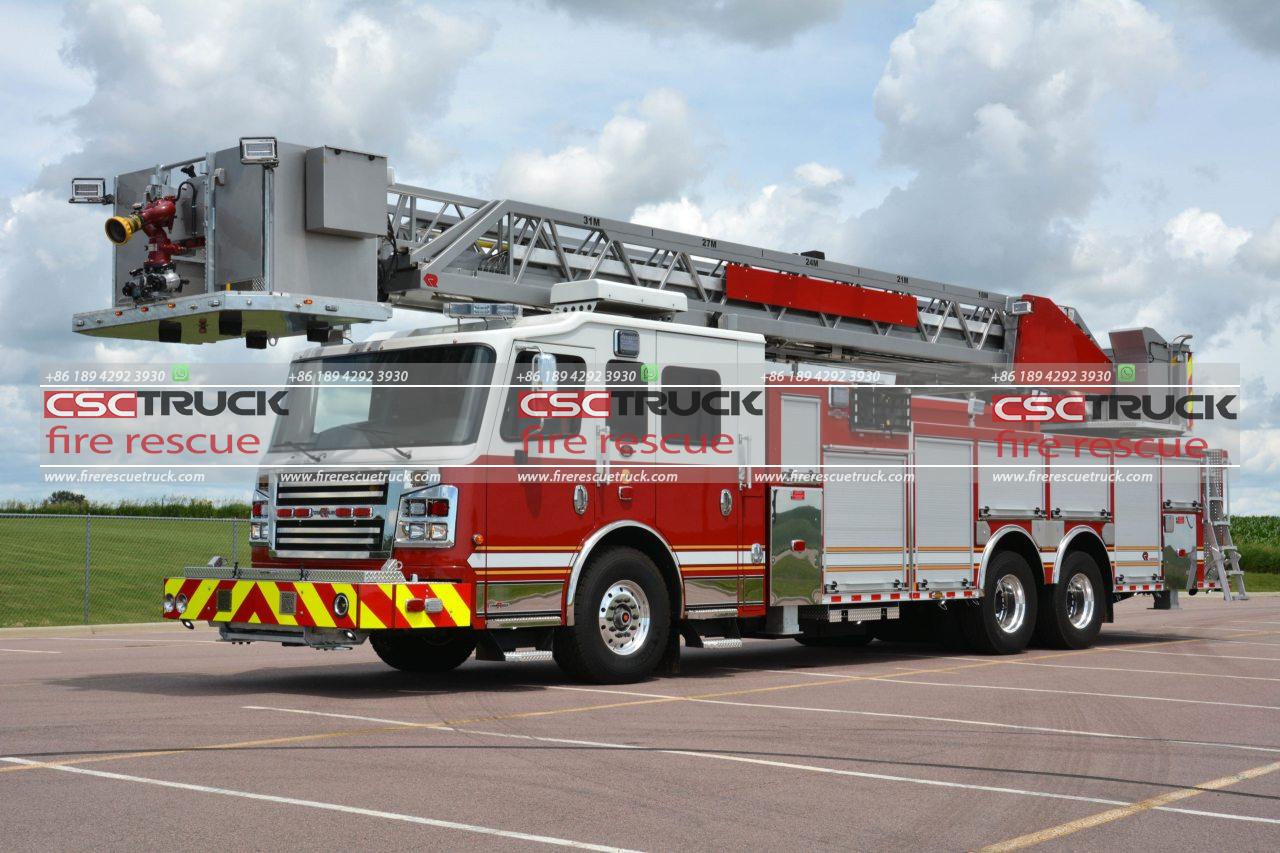Introduction
Firefighters play a critical role in protecting lives and property from the devastating effects of fire. However, not all fires can be extinguished using traditional firefighting methods. Certain fire hazards, such as flammable liquids and gases, require specialized equipment to effectively combat them. One such piece of equipment is the dry powder fire truck, designed with unique features to tackle specific fire hazards. In this article, we will explore the distinct characteristics and capabilities of a dry powder fire truck and its role in fighting specific fire emergencies.
1. Understanding Dry Powder Fire Trucks
Dry powder fire trucks are specialized firefighting vehicles equipped with a dry chemical powder system. This system delivers a concentrated, dry powder agent directly onto the fire, smothering it and preventing further spread. Unlike traditional water-based firefighting methods, dry powder fire trucks are particularly effective in combating fires involving flammable liquids, gases, and electrical equipment.
2. Rapid Fire Suppression
One of the key advantages of dry powder fire trucks is their ability to rapidly suppress fires. The dry powder agent they utilize is highly efficient in extinguishing flames by interrupting the chemical reaction that sustains combustion. This quick suppression capability is crucial when dealing with hazardous fires, as it minimizes the potential for further damage and reduces the risk to firefighters and bystanders.
3. Versatile Application
Dry powder fire trucks offer versatile application methods, allowing them to tackle a wide range of fire hazards effectively. These vehicles are equipped with various discharge mechanisms, including turret-mounted monitors, hand lines, and specialized nozzles. These features enable firefighters to deliver the dry powder agent with precision, reaching areas that are difficult to access and quickly smothering the fire source.
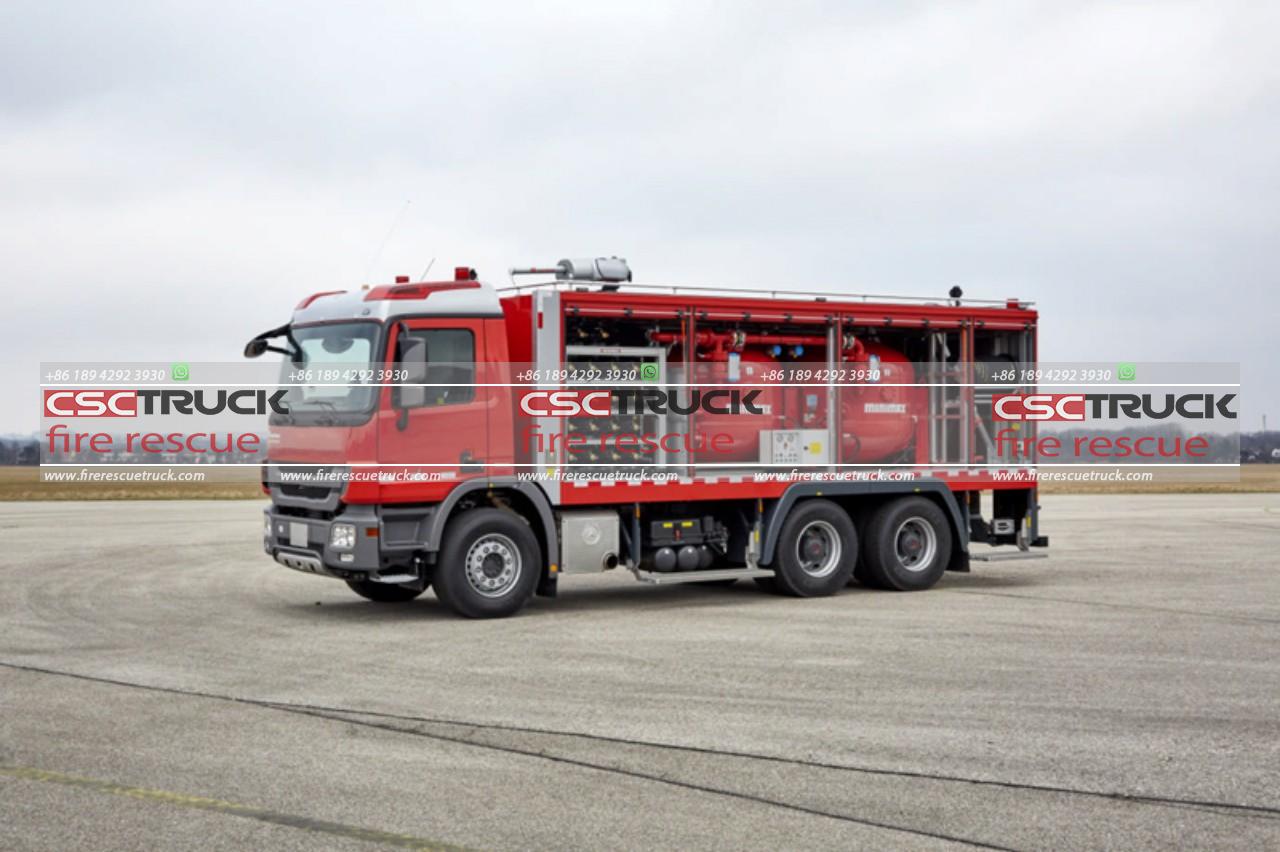
4. Effectiveness on Class B and C Fires
Class B fires involve flammable liquids, such as gasoline, oil, and solvents, while Class C fires involve energized electrical equipment. Dry powder fire trucks excel in combating these types of fires. The dry powder agent forms a blanket-like layer over the liquid surface, preventing the release of flammable vapors and suffocating the fire. Moreover, dry powder is non-conductive, making it safe to use on electrical fires, as it does not conduct electricity and reduces the risk of electrical shock.
5. Enhanced Safety for Firefighters
When it comes to firefighting, the safety of firefighters is paramount. Dry powder fire trucks provide enhanced safety features that protect responders during fire suppression operations. These vehicles are equipped with specialized compartments to store the dry powder agent securely. This ensures that the powder remains stable and prevents accidental discharges or contamination. Additionally, the trucks are fitted with advanced fire suppression systems and safety equipment to protect firefighters from potential hazards.
6. Mobility and Accessibility
Dry powder fire trucks are designed to be highly mobile and easily accessible to reach fire incidents efficiently. They are often built on robust chassis capable of traversing challenging terrains and navigating narrow urban areas. This mobility ensures that the dry powder fire truck can respond to emergency calls quickly, regardless of the location or accessibility of the fire scene.
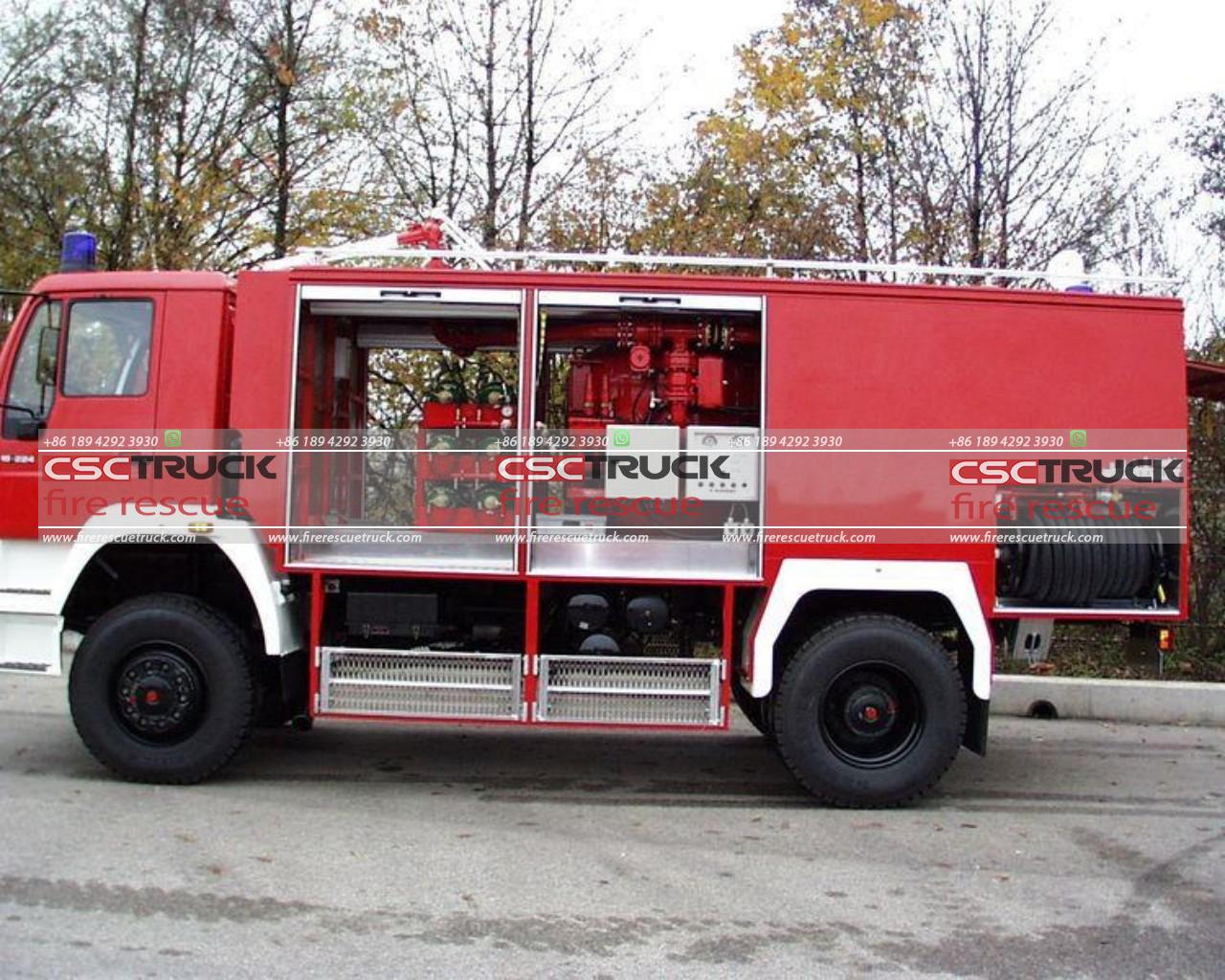
7. Training and Expertise
Operating a dry powder fire truck requires specialized training and expertise. Firefighters need to understand the unique characteristics and limitations of the dry powder agent, as well as the proper techniques for deploying it effectively. Fire departments invest in comprehensive training programs to equip their personnel with the necessary skills to operate and maximize the potential of dry powder fire trucks.
8. Specialized Dry Powder Agents
Dry powder fire trucks utilize specialized dry chemical agents tailored to combat specific fire hazards. Different types of dry powder agents are available, each designed to effectively suppress particular classes of fires. For example, sodium bicarbonate-based agents are commonly used for Class B fires involving flammable liquids, while potassium bicarbonate-based agents are effective against Class C fires involving energized electrical equipment. These specialized dry powder agents enhance the overall performance of the fire truck by providing targeted and efficient fire suppression capabilities.
9. Remote Operation and Automation
In recent years, advancements in technology have led to the integration of remote operation and automation features in dry powder fire trucks. This allows firefighters to operate the vehicle and deploy the dry powder agent from a safe distance, minimizing their exposure to potential hazards. Remote-controlled turret monitors and robotic systems enable precise targeting of the fire source, enhancing the effectiveness of firefighting operations while ensuring the safety of personnel.
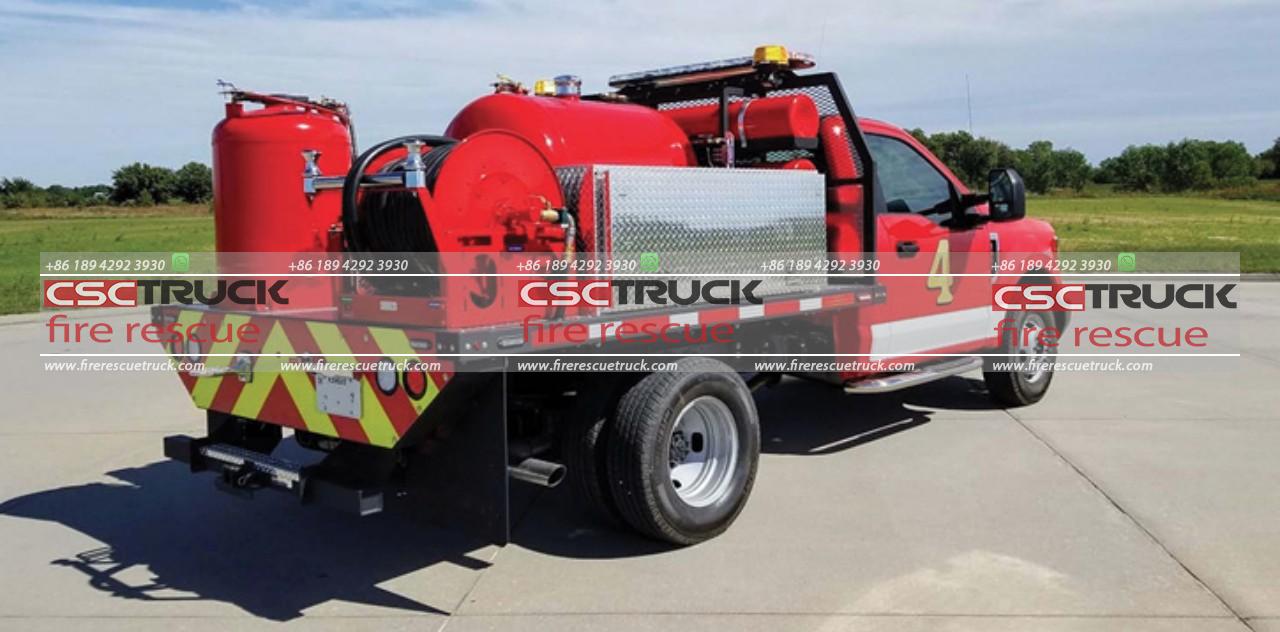
10. Environmental Considerations
Dry powder fire trucks also take into account environmental considerations when combating fire hazards. While dry powder agents are highly effective in extinguishing fires, they can have an impact on the environment. Therefore, modern dry powder fire trucks are designed to minimize the release of harmful chemicals and reduce the environmental footprint. Manufacturers are actively working on developing more environmentally friendly dry powder agents that are equally effective in suppressing fires without compromising ecological sustainability.
11. Integrated Communication and Information Systems
Effective communication and access to real-time information are crucial during firefighting operations. Dry powder fire trucks are often equipped with integrated communication and information systems that enable seamless coordination among firefighters and incident commanders. These systems provide vital data, such as the location of the fire, weather conditions, and building blueprints, enabling firefighters to make informed decisions and optimize their firefighting strategies.
12. Maintenance and Reliability
To ensure the readiness and reliability of dry powder fire trucks, regular maintenance and inspections are essential. Fire departments prioritize routine servicing and inspections of the vehicles to identify and address any potential issues promptly. This includes checking the functionality of the dry powder system, inspecting discharge mechanisms, and verifying the integrity of safety features. By maintaining these vehicles in optimal working condition, fire departments can rely on the dry powder fire trucks to perform effectively during emergencies.
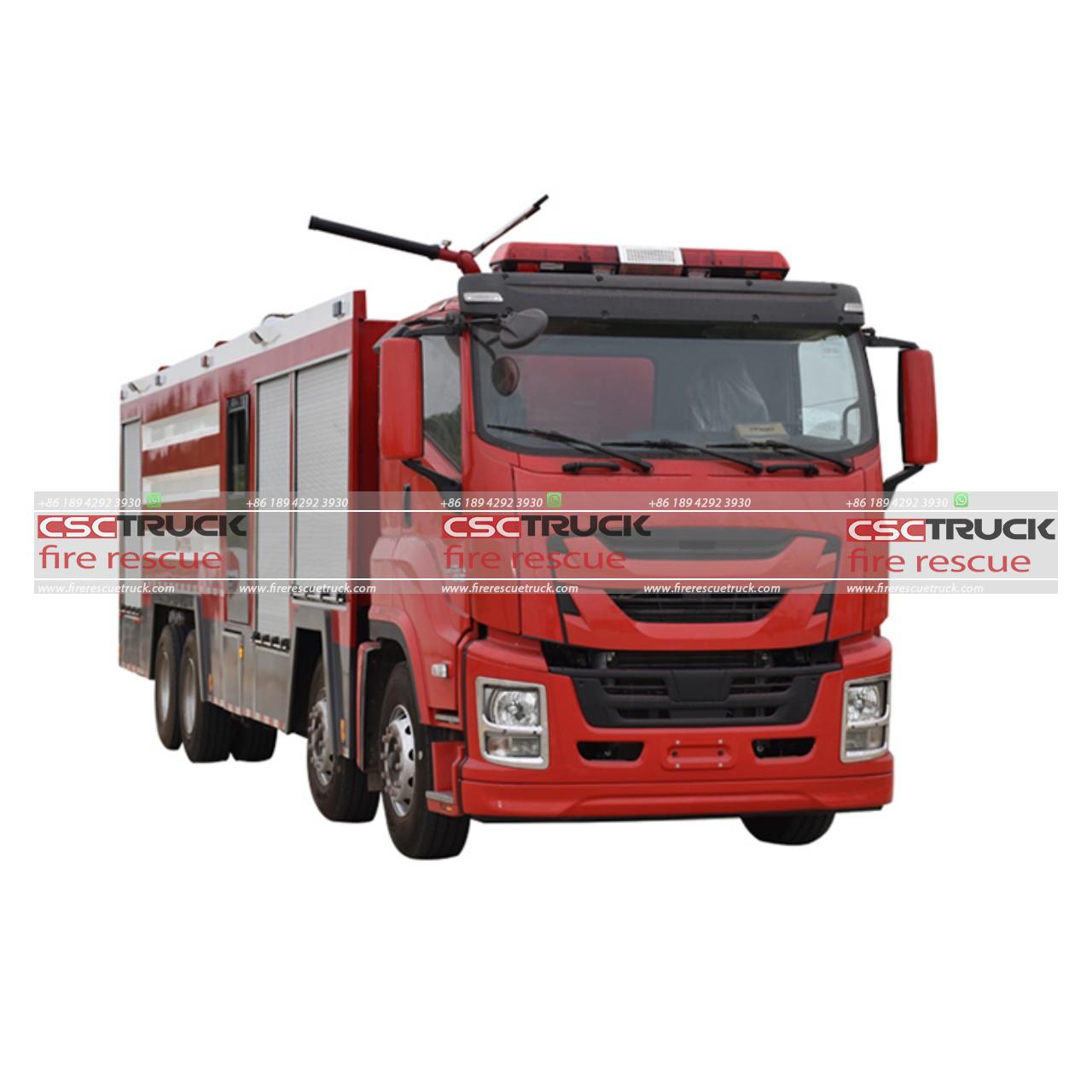
Conclusion
Dry powder fire trucks possess unique features and capabilities that make them highly effective in combating specific fire hazards. From rapid fire suppression and versatile application methods to enhanced safety measures and mobility, these specialized firefighting vehicles play a crucial role in protecting lives and property. As technology continues to advance, dry powder fire trucks will continue to evolve, incorporating innovations such as specialized dry powder agents, remote operation, and environmental considerations. The ongoing commitment to training, maintenance, and reliability ensures that firefighters are equipped with the best tools to face the challenges posed by diverse fire emergencies. By harnessing the power of dry powder agents and leveraging advanced technologies, dry powder fire trucks will remain an indispensable asset in the firefighting arsenal, saving lives and mitigating the devastating effects of fire.





